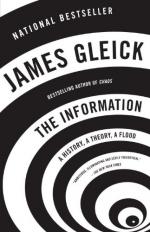
|
| Name: _________________________ | Period: ___________________ |
This test consists of 15 multiple choice questions and 5 short answer questions.
Multiple Choice Questions
1. All known alphabets are based on the original alphabet that emerged about 1500 B.C. in what area?
(a) South America.
(b) Asia.
(c) The Mediterranean region.
(d) Egypt.
2. in what year did John Carrington, an English missionary, publish "The Talking Drums of Africa"?
(a) 1845
(b) 1972
(c) 1949
(d) 1902
3. What was provided in "A Table Alphabeticall"?
(a) The history of alphabets.
(b) Word meanings.
(c) Alphabets of the world.
(d) New words.
4. An alphabetical list did not take what element of the word into account at all, but mechanically placed it in a slot based on the order of the letters?
(a) Its popularity.
(b) Its importance.
(c) Its meaning.
(d) Its relevance.
5. Who devised a way to multiply and divide numbers by adding or subtracting their logarithms?
(a) Thomas Fincke.
(b) Aristotle.
(c) John Napier.
(d) Isaac Newton.
6. The invention of what technology would make Shannon's theory of a computing machine practical?
(a) Circuit.
(b) Transistor.
(c) Grid.
(d) Network.
7. What new word did Claude Shannon, a mathematical researcher at Bell Labs, introduce in the in-house journal called "A Mathematical Theory of Communication"?
(a) The transistor.
(b) The circuit.
(c) The bit.
(d) The relay.
8. What did Alan Turing reduce human thought to?
(a) Numbers.
(b) Its basic elements.
(c) 0s and 1s.
(d) Symbols.
9. What did a young mathematician named Kurt Gödel conclude about conflicting statements?
(a) There were some statements that could neither be proved or disproved.
(b) That Russell had made an error in basic structure of the Principia Mathematica.
(c) That the Principia Mathematica was flawed and began his own work.
(d) There frequency represented only a .001 percent possibility of occurring.
10. What were conflicting statements created by the Principia Mathematica called?
(a) Recursive.
(b) Non-conclusive results.
(c) False positives.
(d) Circular arguments.
11. By 1930, what had replaced the telegraph as the most advanced means of communication?
(a) The two-way radio.
(b) The telephone.
(c) The computer.
(d) Ship to shore communicators.
12. Why did Lovelace publish her mathematical arguments anonymously?
(a) She didn't want to appear more intelligent than Babbage.
(b) She didn't want to embarrass her father.
(c) She wasn't sure her arguments were correct.
(d) Women were not expected to engage in scientific or academic efforts.
13. What code did Claude Shannon apply to relay switches which could either be open or closed?
(a) 0 and 1.
(b) 1 and 100
(c) .1 to .5
(d) 2 and 4
14. What were the two essential elements of Shannon's simple communication model?
(a) Grid and network.
(b) A transmitter and a receiver.
(c) Two relay switches.
(d) Circuit and grid.
15. What language do the drums of what is now Zaire mimic?
(a) Kele.
(b) Bantu.
(c) Swahili
(d) Zulu.
Short Answer Questions
1. How many years ago was the first language established?
2. What were the interests of Charles Babbage, a brilliant Englishman who lived in the 19th century?
3. What word book by Robert Cawdrey was published first in 1604?
4. What was Shannon able to theoretically compute by measuring a message in bits? By measuring information in bits, he could theoretically compute the maximum amount of information that could be transmitted through a given channel.
5. What was the goal of James Murray when he wrote the first Oxford English Dictionary in 1879?
|
This section contains 564 words (approx. 2 pages at 300 words per page) |

|




